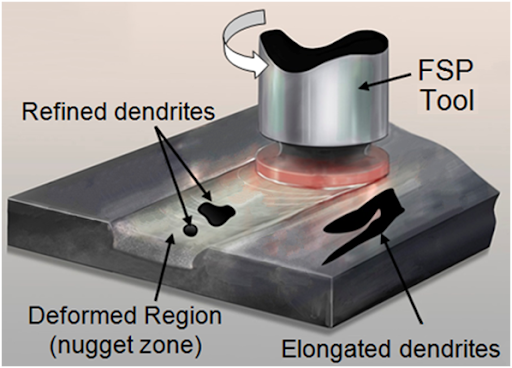Millions of people around the world are partially or fully dependent on medicines to live a normal life, with such huge dependency even a small defect in medication may impact a lot of people. There are many horrid tales of promising medicines which passed clinical trials but ended up causing major upheaval. History is filled with cases; Thalidomide Tragedy, OxyContin and the Opioid Epidemic, Vioxx (Rofecoxib) all highlighted the need of a drug monitoring system like pharmacovigilance to safeguard patients against adverse reactions of medications.
Pharmacovigilance
is the lifeblood of the pharmaceutical industry, ensuring the safety and
efficacy of medicines for patients worldwide. The World Health Organization
(WHO) defines pharmacovigilance as- ‘‘the science and activities related to
detecting, assessing, and preventing adverse effects or any other drug-related
problems.’’ Though it sounds like a complex term, at its core pharmacovigilance
is just making sure that medicines are safe for people to use.
The
present fast paced scenario of the pharma industry needs safety breaks like
pharmacovigilance to ensure that only high-quality medications with minimal
risk to patients reach the market. With continuous advances in the pharma
industry every year more and more drug molecules are ready to be turned into
formulations and marketed to millions after their success in clinical trials.
But the clinical trials done on few hundred people don't reflect the reality or
outcomes of medication in diverse populations; that is bound to take it once it
is launched in market. Pharmacovigilance is what prevents the medication related epidemics from becoming a
regular occurrence.
Even
though pharmacovigilance is directly or indirectly involved and influences
every sector of pharma and healthcare, there are three major areas it is
concerned with i.e. Product quality, Adverse drug reactions and Medication
errors.
In
the pharma industry, pharmacovigilance has significant influence in drug
approval process as it is integral part of both pre-approval safety assessments
and post-marketing surveillance. The pharma industry spends a lot of money in
marketing, product design, making sure the quality of medicines is up to
regulatory standards and in other drug development and evaluation tests.
Pharmacovigilance reports on adverse drug reactions, product quality etc. along
with patient feedback and surveys provide enough information for the
pharmaceutical company to make future decisions for its medications in the
market.
Pharmacovigilance
systems ensure the safety and efficacy of pharmaceutical products throughout
their lifecycle through their continuous monitoring, they identify the
potential risks associated with medications, facilitating timely interventions
and regulatory compliance.
Pharmacovigilance plays an important role in maintaining the product quality in the pharma industry through its continuous monitoring of medications throughout its lifecycle. Not only do the pharmacovigilance systems help with detection of quality issues in medicines during drug development phase but it also plays significant role in monitoring post marketing safety of medicines too. Pharmacovigilance systems also help pharma companies in decision making by providing benefit-risk profile of medications which in turn helps in taking guided actions in direction of product modifications, labeling changes, or market withdrawals if necessary.
Pharmacovigilance
is an ever evolving continuous and complex system that operates through
coordinated efforts at local, national, and global levels. Drug monitoring is a
complex task that requires collaborative monitoring efforts and engages with
diverse stakeholders each with specialized roles and responsibilities to
maintain the safety of medications worldwide.
The
synergistic effect of collaborative monitoring efforts by regulatory agencies,
pharmaceutical companies, and healthcare professionals impacts the public trust
in the medications which in turn impacts the public trust in the pharmaceutical
company. Pharmacovigilance systems acts as bridge between healthcare, pharma
companies and the patients. The pharmacovigilance reports act as guiding light
to pharma companies that help in navigating the future of their marketed
medications and formulations.
Pharmacovigilance
systems strongly rely on collection and analysis of data on drug safety
obtained though different monitoring units. The pharmacovigilance data is
important for pharmaceutical companies as it has major impact in the production
as well as labelling of medications. There are many ways in which the data
collection for pharmacovigilance is done; it can be done passively, where
reports are submitted spontaneously and voluntarily like in case of thalidomide
tragedy where spontaneous reports from healthcare professionals provided the
data or via active data collection, where through specific studies or surveys
data is collected, for example; in market withdrawal of NSAID Vioxx
(rofecoxib), active data collection during the post-marketing studies revealed
that the negative impact of vioxx on cardiovascular health far exceeded its
usability as pain medication. In rare cases like for covid vaccines, the data
is collected mandatorily i.e. the reporting is required by law. Once the data
is collected, it is carefully analyzed and any
important findings are reported to ensure the safe use of medications.
Pharmacovigilance
is a major and integral part of pharmaceutical industries, in addition to
providing the reports on adverse drug reactions and maintaing product quality
it also plays significant role in identification and addressing potentially
harmful medication errors to make sure safety of medications. The most common
types of medication errors are prescribing errors, dispensing errors,
administration errors and monitoring errors. The pharmacovigilance system
through their assessed data on medication errors help the pharmaceutical
companies and healthcare system in identification of patterns and implement the
necessary actions to reduce the risk of medication errors and improve
medication safe.
Despite
playing cardinal role in both the pharmaceutical industry and health care
sector, pharmacovigilance is not advancing with the same pace as other
pharmaceutical industry. Like any other system, Pharmacovigilance too has its
own challenges. The increasing complexity of drug therapies and the rise of
personalized medicine demands a complex monitoring system. Additionally,
Underreporting of Adverse Drug Reactions (ADRs), Lack of Awareness and training
among personnel has emerged as significant issue that need immediate attention.
These challenges call for pharmacovigilance related training and education for
all healthcare and pharma professionals. Implementation of better reporting
systems and usage of advanced data analytics may help with detection and
assessment.




